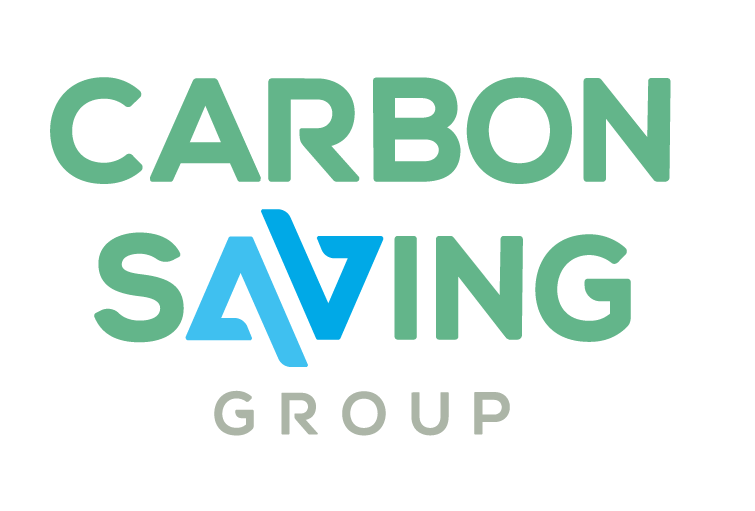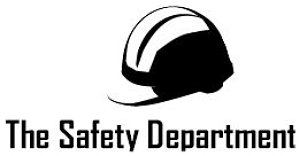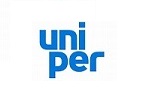Title Page
-
Site conducted
-
Conducted on
-
Prepared by
-
Location
-
Activity
Hazard 1. Working near water.
-
RISKS
-
Contamination of water and adjacent land.
-
WHO/WHAT COULD BE HARMED AND HOW?
-
Environment
-
EXISTING CONTROL MEASURES
-
When not in use, all materials, plant and equipment will be stored a minimum of 10m from any watercourse.
-
No fuel storage is permitted in flood plain areas.
-
All personnel will carry out simple visual checks on watercourses, any evidence of pollution or contaminants will be reported to management for investigation.
-
Risk Rating - Likelihood
-
Risk Rating - Severity
-
Risk Rating - Likelihood x Severity
- 1-3 Desirable (No Further Action Required)
- 4-6 Acceptable (Monitor Situation)
- 8-12 Undesirable (Action Required)
- 13-15 Unacceptable (Urgent Action Required)
- 16-25 Catastrophic (Stop Work Immediately)
-
Please give details
-
Extra Controls Needed?
-
Please give details
-
Completion Date
-
Person Responsible
Hazard 2. Mobile plant and equipment on-site re-fuelling.<br>
-
RISKS
-
Contamination of land and watercourses. Damage to EA flood structures.
-
WHO/WHAT COULD BE HARMED AND HOW?
-
Environment
-
EXISTING CONTROL MEASURES
-
All mobile plant will be fitted with either an external or internal drip tray.
-
No re-fuelling of mobile plant will be undertaken within 30m.
-
Spill kits will be available on site and the workforce will have the training in the use of the equipment.
-
Emergency response procedures will be briefed during site inductions, toolbox talks and specific briefings.
-
Locations of spill kits will be identified by posters and signage.
-
Persons responsible for re-fuelling plant and plant will have spill kits available.
-
All staff are responsible for pollution prevention. Control on site and individuals will be responsible for clean-up of occurrences that have little or no environmental impact.
-
Risk Rating - Likelihood
-
Risk Rating - Severity
-
Risk Rating - Likelihood x Severity
- 1-3 Desirable (No Further Action Required)
- 4-6 Acceptable (Monitor Situation)
- 8-12 Undesirable (Action Required)
- 13-15 Unacceptable (Urgent Action Required)
- 16-25 Catastrophic (Stop Work Immediately)
-
Please give details
-
Extra Controls Needed?
-
Please give details
-
Completion Date
-
Person Responsible
Hazard 3. Noise and vibration.
-
RISKS
-
Neighbour annoyance.
-
Potential hearing damage
-
WHO/WHAT COULD BE HARMED AND HOW?
-
Public, Staff, Contractors
-
EXISTING CONTROL MEASURES
-
All plant and machinery will be silenced or suppressed, or other noise mitigation measures adopted to minimise nuisance noise.
-
Local residents are to be informed prior to commencement should particularly noisy activities, typically piling or 24-hour plant operation, be necessary.
-
All reasonable and practical measures will be taken to reduce the generation and transmission of vibration caused by plant or equipment or work activities.
-
Normal working hours will be 0800 to 1800 Mon to Thursday, 0800 to 1400 Friday. No work will be undertaken on a Saturday or Sunday without prior authorisation.
-
Hearing protection will be made available to site operatives and visitors during these operations.
-
Mandatory signage to be displayed to the noise effected areas.
-
Risk Rating - Likelihood
-
Risk Rating - Severity
-
Risk Rating - Likelihood x Severity
- 1-3 Desirable (No Further Action Required)
- 4-6 Acceptable (Monitor Situation)
- 8-12 Undesirable (Action Required)
- 13-15 Unacceptable (Urgent Action Required)
- 16-25 Catastrophic (Stop Work Immediately)
-
Extra Controls Needed?
-
Please give details
-
Completion Date
-
Person Responsible
Hazard 4. Air
-
RISKS
-
Contamination to Air.
-
WHO/WHAT COULD BE HARMED AND HOW?
-
Environment
-
EXISTING CONTROL MEASURES
-
Dust from construction activities is the primary type of air pollution anticipated and control measures will be adopted to suppress the generation of dust
-
Risk Rating - Likelihood
-
Risk Rating - Severity
-
Risk Rating - Likelihood x Severity
- 1-3 Desirable (No Further Action Required)
- 4-6 Acceptable (Monitor Situation)
- 8-12 Undesirable (Action Required)
- 13-15 Unacceptable (Urgent Action Required)
- 16-25 Catastrophic (Stop Work Immediately)
-
Extra Controls Needed?
-
Please give details
-
Completion Date
-
Person Responsible
Hazard 5. COSHH
-
RISKS
-
Contamination of watercourses and land by hazardous substances.
-
WHO/WHAT COULD BE HARMED AND HOW?
-
Environment
-
EXISTING CONTROL MEASURES
-
All chemicals will be stored in the original packaging and according to the material data sheet.
-
Secondary containment will be provided by means of adequately sized drip trays.
-
COSHH assessments and Material Safety Data Sheets (MSDS) will be available for all chemical products.
-
Materials will be purchased to avoid the need for bulk storage and the generation of waste.
-
Suppliers of materials will be asked to provide adequate health and safety information to support their products and no materials will be issued without supporting documentation.
-
Risk Rating - Likelihood
-
Risk Rating - Severity
-
Risk Rating - Likelihood x Severity
- 1-3 Desirable (No Further Action Required)
- 4-6 Acceptable (Monitor Situation)
- 8-12 Undesirable (Action Required)
- 13-15 Unacceptable (Urgent Action Required)
- 16-25 Catastrophic (Stop Work Immediately)
-
Extra Controls Needed?
-
Please give details
-
Completion Date
-
Person Responsible
Hazard 6. Fuel Theft
-
RISKS
-
Contamination of land and water.
-
WHO/WHAT COULD BE HARMED AND HOW?
-
Environment
-
EXISTING CONTROL MEASURES
-
Site security may be required.
-
Site compound is to be secured with padlocks at the end of each shift.
-
All small plant and equipment to be locked away in the site container and the keys are to be taken away be the site supervisors.
-
Larger items of plant are to keep their fuel tank storage to a minimum.
-
Risk Rating - Likelihood
-
Risk Rating - Severity
-
Risk Rating - Likelihood x Severity
- 1-3 Desirable (No Further Action Required)
- 4-6 Acceptable (Monitor Situation)
- 8-12 Undesirable (Action Required)
- 13-15 Unacceptable (Urgent Action Required)
- 16-25 Catastrophic (Stop Work Immediately)
-
Extra Controls Needed?
-
Please give details
-
Completion Date
-
Person Responsible
Hazard 7. Waste
-
RISKS
-
Increased burden on landfill sites.
-
WHO/WHAT COULD BE HARMED AND HOW?
-
Environment
-
EXISTING CONTROL MEASURES
-
Waste will be managed with the aim of reducing, reusing and recycling where practicable.
-
The principles of waste management will be communicated to all personnel by site induction and subsequent toolbox talks and briefings.
-
Waste storage areas will be sited a minimum of 10m from any surface drain or watercourse where practicable.
-
The site will have skips for general waste, metals, wood, contaminated soils and welfare waste as required.
-
Each skip will be in good condition and stored on hard standing, where practicable; hazardous waste will be contained in sealable containers, where practicable.
-
Waste containers will be identified to specific waste types and labelled
-
All waste will be carried by a licensed waste carrier and will be disposed of only to a licensed disposal facility.
-
Fly tipping of waste will not be accepted or condoned in any circumstance; any fly tipped materials found on site will be reported to the Client and local authority and removed or disposed of in accordance with standard procedures unless directed otherwise.
-
No waste will be burnt or buried on site.
-
In circumstances where the nature of the waste is unknown, a chemical analysis will be undertaken. The analysis will be used to identify the waste type.
-
Risk Rating - Likelihood
-
Risk Rating - Severity
-
Risk Rating - Likelihood x Severity
- 1-3 Desirable (No Further Action Required)
- 4-6 Acceptable (Monitor Situation)
- 8-12 Undesirable (Action Required)
- 13-15 Unacceptable (Urgent Action Required)
- 16-25 Catastrophic (Stop Work Immediately)
-
Extra Controls Needed?
-
Please give details
-
Completion Date
-
Person Responsible
Hazard 8. Energy consumption/monitoring<br><br>
-
RISKS
-
Impact to the Environment
-
WHO/WHAT COULD BE HARMED AND HOW?
-
Environment
-
EXISTING CONTROL MEASURES
-
Switch off schemes and energy saving campaigns will be implemented.
-
Operatives will be encouraged to ensure all plant, equipment and machinery is switched off when not in use.
-
Use of car share and buses and other forms of public transport will be encouraged.
-
Poster campaigns will be displayed within site offices.
-
Risk Rating - Likelihood
-
Risk Rating - Severity
-
Risk Rating - Likelihood x Severity
- 1-3 Desirable (No Further Action Required)
- 4-6 Acceptable (Monitor Situation)
- 8-12 Undesirable (Action Required)
- 13-15 Unacceptable (Urgent Action Required)
- 16-25 Catastrophic (Stop Work Immediately)
-
Extra Controls Needed?
-
Please give details
-
Completion Date
-
Person Responsible
Hazard 9. Transport
-
RISKS
-
Impact to Air
-
WHO/WHAT COULD BE HARMED AND HOW?
-
Environment
-
EXISTING CONTROL MEASURES
-
It is unavoidable that road transport will be required to enable the movement of persons and deliveries.
-
Company vehicles and plant purchased from reputable suppliers.
-
Maintenance and service records are to be retained.
-
Routes to be planned to ensure low pollution.
-
Where necessary, spill kits will be stored in vehicles.
-
Consideration should be given to the following:
-
For personal transport, the use of public transport should be the preferred option.
-
Personal journeys should be minimised by effective work planning and the use of ‘car share’ type options.
-
Ensure vehicles are well maintained.
-
Where practical, deliveries should be consolidated to minimise the number of deliveries and therefore, journeys, required.
-
Utilise suppliers with a commitment to the environment and energy saving.
-
Risk Rating - Likelihood
-
Risk Rating - Severity
-
Risk Rating - Likelihood x Severity
- 1-3 Desirable (No Further Action Required)
- 4-6 Acceptable (Monitor Situation)
- 8-12 Undesirable (Action Required)
- 13-15 Unacceptable (Urgent Action Required)
- 16-25 Catastrophic (Stop Work Immediately)
-
Extra Controls Needed?
-
Please give details
-
Completion Date
-
Person Responsible
Hazard 10. Purchase of materials causing unnecessary pollution.<br>
-
RISKS
-
Unnecessary materials being brought into work environment
-
WHO/WHAT COULD BE HARMED AND HOW?
-
Environment
-
EXISTING CONTROL MEASURES
-
Materials must always be purchased from suppliers who can prove that their products are environmentally friendly.
-
Suppliers must be chosen with regard to their environmental credentials.
-
Suppliers must inform us of any changes in their recycling policy.
-
Risk Rating - Likelihood
-
Risk Rating - Severity
-
Risk Rating - Likelihood x Severity
- 1-3 Desirable (No Further Action Required)
- 4-6 Acceptable (Monitor Situation)
- 8-12 Undesirable (Action Required)
- 13-15 Unacceptable (Urgent Action Required)
- 16-25 Catastrophic (Stop Work Immediately)
-
Extra Controls Needed?
-
Please give details
-
Completion Date
-
Person Responsible
Date For Review & Signatures
-
Date for Review of Assessment
-
Assessors Signature













